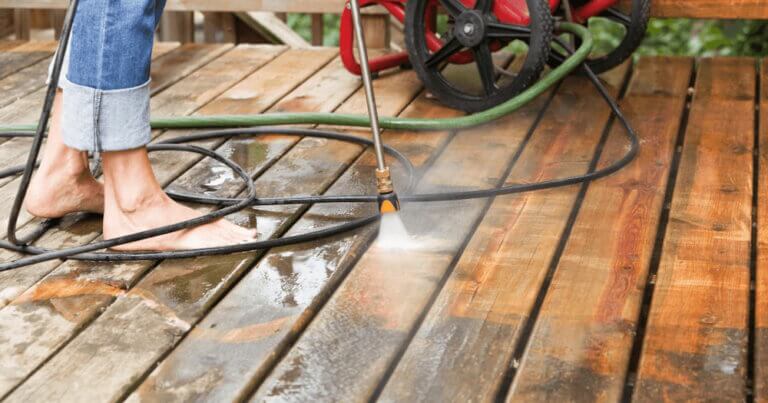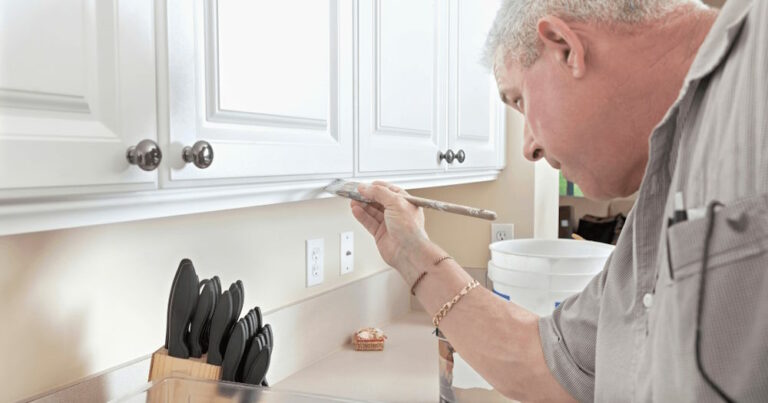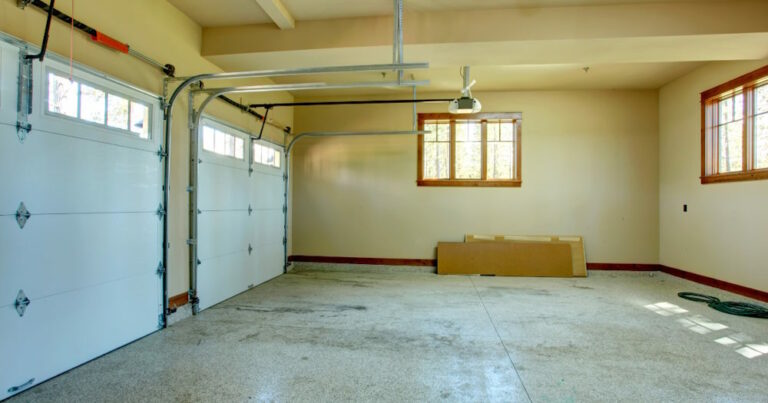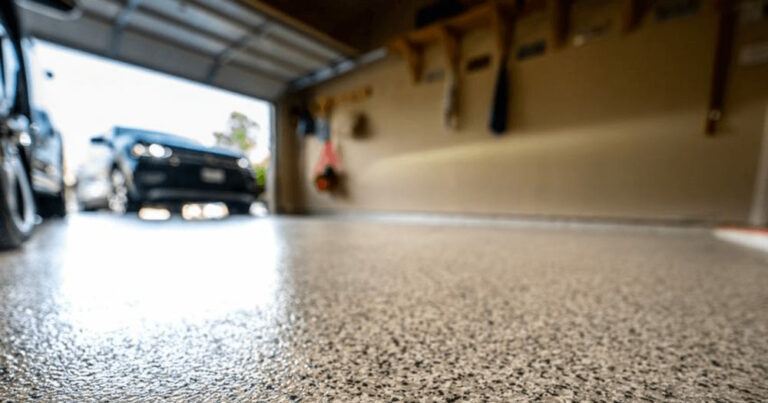Stucco is a popular exterior finish for residential and commercial buildings, prized for its durability and aesthetic appeal. However, over time, stucco may experience wear and tear, leading to the need for repairs. Stucco repair is the process of fixing any damage to the stucco exterior, ensuring its longevity, functionality, and visual appeal.
Whether your stucco has cracks, chips, or moisture damage, it’s essential to address these issues promptly to prevent further deterioration. By fixing and maintaining your stucco exterior, you can extend its lifespan and enhance your property’s curb appeal.
Key Takeaways:
- Stucco repair is the process of fixing any damage to the stucco exterior.
- Properly fixing and maintaining your stucco exterior ensures long-term durability and visual appeal.
- Stucco damage such as cracks, chips, moisture damage, and efflorescence can impact the stucco’s overall integrity.
- Assessing your stucco repair needs effectively is crucial to determining the extent of the damage and the necessary repairs.
- DIY stucco repair may be an option for minor repairs, but hiring a professional contractor is often recommended for complex or extensive repairs.
Understanding Stucco Damage
Stucco is a popular exterior finish for homes due to its durability and low maintenance needs. However, over time, stucco can experience various types of damage that affect both its structural integrity and visual appeal. In this section, we will delve into the common types of stucco damage that homeowners may encounter
Types of Stucco Damage
Stucco damage can manifest in several ways and for various reasons. Here are the most common types:
| Type of Damage | Description | Cause |
| Cracks | Visible breaks or fissures in the stucco surface | Foundation settling, temperature changes, or poor application |
| Chips | Small pieces of stucco that have broken away | Impact from debris or lack of expansion joints |
| Moisture damage | Discoloration or buckling of the stucco due to water infiltration | Missing or damaged flashing, improper installation, or lack of drainage |
| Efflorescence | White, chalky deposits on the stucco surface | Moisture infiltration and evaporation |
Identifying the type of damage is crucial to determine the best course of action for repair.
Impact of Stucco Damage
If left unaddressed, stucco damage can worsen over time and lead to significant structural problems. In the case of moisture damage, for example, water infiltration can lead to mold growth, wood rot, and even foundation issues.
Moreover, damaged stucco can also tarnish the aesthetic appeal of a home, reducing its value and curb appeal. Cracks and chips can make a home look old and uncared for, as well as allow pests to enter and damage the home’s interior.
Therefore, it is crucial to address stucco damage promptly to prevent further issues and maintain the beauty and durability of your home exterior.
Next, we will discuss how to assess your stucco repair needs to determine the best repair options.
Assessing Stucco Repair Needs
Before beginning any stucco repair project, it’s essential to assess the extent of the damage and determine the appropriate course of action. Conducting a thorough inspection of the stucco exterior can help identify any underlying issues that may require repair.
Signs of Damage
Some signs of damage that homeowners may notice include:
- Cracks or holes in the stucco
- Discoloration or staining
- Mold or mildew growth
- Efflorescence (white, powdery substance on the stucco surface)
- Stucco that feels soft or spongy
If any of these issues are present, it’s crucial to address them promptly to prevent further damage.
Inspection
Inspecting the stucco exterior involves examining it in detail and identifying any potential problem areas. It’s important to check for cracks or chips in the stucco, signs of moisture damage, and any areas where the stucco may be separating from the surface underneath.
If you’re unsure what to look for, consider hiring a professional inspector to assess the stucco’s condition. This can provide you with a better understanding of the repairs needed and ensure the project is completed correctly.
DIY vs. Professional Stucco Repair
When it comes to stucco repair, homeowners have the option to tackle the repairs themselves or seek the assistance of a professional contractor. Before making a decision, it’s important to consider the pros and cons of both options.
DIY Stucco Repair
One of the primary benefits of DIY stucco repair is the potential to save money on labor costs. However, it’s important to keep in mind that repairing stucco can be a challenging and time-consuming process, particularly for those without experience in home repair. Additionally, DIY repairs may not be as thorough as those done by a professional, which could lead to additional repairs and expenses down the line.
Another factor to consider is safety. Stucco repair involves working with ladders and tools, which can be dangerous for those who are not trained or experienced in their use. It’s important to take all necessary safety precautions when attempting DIY stucco repair.
Professional Stucco Repair
Professional stucco repair contractors have the experience, skills, and tools necessary to complete repairs quickly and effectively. They can also provide expert advice on the best repair techniques and materials for your specific situation.
While hiring a professional contractor may be more expensive than DIY repairs, it’s important to consider the long-term savings. Properly repaired stucco can last for decades, while improperly repaired stucco may require additional repairs or replacement in a much shorter amount of time. Additionally, hiring a professional can save time and hassle, allowing homeowners to focus on other important tasks.
Stucco Repair Techniques and Materials

Stucco repair involves using various techniques and materials to fix common issues such as cracks, chips, and moisture damage. The right technique and material will depend on the severity and extent of the damage. Below are some of the popular stucco repair techniques:
Crack Patching
Cracks are a common issue with stucco, and the patching technique involves filling them with a suitable material. Depending on the severity and location of the crack, a stucco caulk or patching compound may be used. For hairline cracks, an elastomeric caulk is advisable as it can expand and contract with the stucco. Larger cracks may require a bonding agent and a patching compound that blends in with the existing stucco texture.
| Technique | Material |
| Crack patching | Stucco caulk or patching compound |
| Chipped stucco repair | Stucco patching compound, bonding agent |
| Moisture damage repair | Waterproof membrane, stucco, and paint |
Chipped Stucco Repair
Chips can occur due to impact from a hard object or as a result of natural wear and tear. Repairing chipped stucco involves applying a patching compound over the damaged area and smoothing it out to match the existing texture. A bonding agent may be applied before the compound to ensure it adheres well to the stucco.
Moisture Damage Repair
When stucco is exposed to moisture over an extended period, it can result in severe damage, including mold and rot. Repairing moisture damage involves removing the damaged stucco and replacing it with a waterproof membrane, stucco, and paint. It’s essential to identify and address the source of the moisture to prevent further damage.
As for stucco repair materials, these are the most commonly used:
- Stucco patching compound
- Stucco caulk
- Bonding agent
- Waterproof membrane
- Stucco paint
When choosing stucco repair materials, it’s essential to consider their compatibility with the existing stucco and the severity of the damage. Using the wrong material can lead to further damage and additional repair costs.
Pro Tip: If you’re unsure about which stucco repair technique or material to use, it’s always best to consult an expert contractor.
Step-by-Step Guide to DIY Stucco Repair

Repairing stucco yourself is a viable option if the damage is minor and you have some DIY experience. Here is a step-by-step guide to help you get started.
Step 1: Safety First
Safety should always be the top priority. Make sure you have safety goggles, gloves, and a dust mask before starting any stucco repair project. You should also keep any pets or children away from the work area.
Step 2: Prepare the Area
Clean the damaged area with a stiff brush, removing any debris or loose stucco. Be sure to also cover any nearby plants, windows, or doors to protect them from accidental damage.
Step 3: Patch the Damage
Apply a stucco patching compound to the damaged area, using a trowel to smooth it out. You can find these compounds at most hardware stores, and they come in various colors to match your stucco.
| Patching Compound | Pros | Cons |
| Acrylic-Based | – Dries quickly
– Easy to apply – Resistant to cracking |
– Can be expensive
– Can be difficult to color match |
| Cement-Based | – Affordable
– Strong and durable – Easy to color match |
– Can take a long time to dry
– Prone to cracking |
Step 4: Sand and Smooth
Once the patching compound has dried, use sandpaper to smooth out the surface. Start with a rough grit and work your way to a finer grit until the surface is smooth and even.
Step 5: Apply Texture
If your stucco has a textured finish, you will need to match the texture of the surrounding area. Apply a stucco texture coat using a trowel or a textured roller, and allow it to dry before painting or sealing.
Tip: If you are unsure of how to match the texture, practice on a small, inconspicuous area first.
Step 6: Paint or Seal
After the texture coat has dried, you can paint or seal the repaired area to match the rest of the stucco.
- If you are painting, be sure to use a masonry paint that is specifically designed for stucco.
- If you are sealing, use a high-quality stucco sealer to protect the repaired area from moisture and damage.
That’s it! Following these steps can help you successfully repair minor stucco damage on your own.
Hiring a Professional Stucco Repair Contractor
If you have assessed that your stucco repair needs require professional assistance, it is essential to hire a reputable contractor. Here are some hiring tips to help you make an informed decision:
- Research, research, research: Take the time to research potential contractors thoroughly. Read reviews, check their credentials and qualifications, and make sure they have experience with stucco repair.
- Get multiple quotes: Obtain several quotes from different contractors and compare them. Look for discrepancies in pricing and ask for an itemized breakdown of the estimate.
- Check for insurance: Ensure that the contractor has liability insurance and workers’ compensation coverage. This will protect you in case of any accidents or damages that may occur during the repair process.
- Ask for references: Request references from previous clients and follow up on them. This will give you an idea of the contractor’s work quality and reliability.
- Get a written contract: Make sure to get a written contract that outlines the scope of work, timeline, and payment schedule. Review the contract carefully before signing and ask for clarification on any terms you don’t understand.
- Stay involved: During the repair process, communicate with the contractor regularly and stay involved in the process. This will ensure that the job is completed to your satisfaction.
Remember, hiring a professional stucco repair contractor is an investment in the longevity and visual appeal of your home. Take the time to find a reputable and skilled contractor to ensure that your stucco repair needs are met with expertise and care.
Preventive Measures for Stucco Maintenance
Preventive measures are the key to keeping your stucco exterior in top shape. By following these simple steps, you can avoid stucco damage and minimize the need for repairs.
Regular Cleaning
Regular cleaning is essential to maintain the appearance and integrity of your stucco exterior. Dirt, debris, and mold can accumulate over time, leading to further damage. Using a soft-bristled brush, gently scrub the stucco with a mild detergent solution. Rinse the stucco surface thoroughly with water and let it dry naturally.
Proper Drainage
Improper drainage can cause significant damage to your stucco exterior. Water that pools near the foundation can seep into the stucco and cause moisture damage. Ensure proper drainage by installing downspouts, gutters, and diverters to direct water away from your home’s foundation.
Address Minor Issues Promptly
Minor issues such as hairline cracks or chips can quickly escalate into major problems if left unattended. Inspect your stucco exterior regularly, and address any signs of damage promptly. Use a sealant or filler to repair small cracks and chips to prevent them from expanding and causing more extensive damage.
Regular Inspections
Regular inspections can help identify potential issues before they become severe and costly to repair. Inspect your stucco exterior at least twice a year, paying attention to areas around windows, doors, and vents. Look for signs of damage such as cracks, chips, and efflorescence, which can indicate moisture damage.
Professional Maintenance
Professional maintenance services can provide a comprehensive assessment of your stucco exterior and identify potential issues. They can recommend preventive measures to avoid damage and ensure the longevity of your stucco exterior.
“Preventive measures are always better than repairs. Maintain your stucco exterior regularly to avoid costly damage in the future.”
Cost Considerations for Stucco Repair
When it comes to stucco repair, cost is a significant consideration for homeowners. The total expense of repairing stucco damage can vary greatly depending on various factors. To ensure a successful and affordable repair, it is crucial to understand the cost considerations involved.
One of the significant cost factors to consider is the extent of the stucco damage. Minor repairs, such as filling in small cracks or chips, are relatively inexpensive and can typically be done with DIY techniques. However, more extensive damage, such as large cracks or areas affected by moisture damage, may require professional assistance and can result in higher repair costs.
The repair techniques used can also impact the overall cost. Simple repairs such as filling in cracks or chips can be done with basic materials such as stucco patching compound, which is relatively affordable. However, moisture damage or more significant repairs may require more expensive materials and specialized techniques, raising the overall cost.
| Factors Affecting Stucco Repair Costs |
| Extent of Damage |
| Repair Techniques Used |
| Size of the Affected Area |
| Type of Materials Used |
The size of the affected area is another cost consideration. Larger areas require more repair materials and more time, resulting in higher costs. Additionally, the type of materials used can impact the overall expense. Premium stucco materials can be more expensive than standard options, but they may offer better-quality repairs and longer-lasting results.
Finally, whether or not professional assistance is required can also affect the cost. While DIY repairs can save money on labor costs, hiring a professional contractor can ensure successful and long-lasting repairs. It is essential to weigh the potential risks and benefits of each option to determine whether professional help is necessary.
Overall, the cost considerations involved in stucco repair are complex, and it is crucial to consider all the factors before deciding on a repair approach. By understanding the various expenses involved, homeowners can make informed decisions to ensure successful and affordable stucco repairs.
Extended Lifespan of Stucco with Proper Maintenance
Regular stucco maintenance is critical to extend the lifespan of your exterior. By addressing minor issues promptly and following preventive measures, you can prevent significant damage and costly repairs. Proper maintenance can save you money in the long run and preserve the visual appeal of your home.
Stucco maintenance involves regular cleaning, proper drainage, and addressing any signs of damage promptly. Keep an eye out for cracks, chips, or discoloration, and seek professional assistance if you notice any issues beyond your DIY capabilities.
“Proper maintenance is key to preventing costly repairs and preserving the visual appeal of your home.”
In addition to addressing any damage, you should also consider applying a new coat of stucco finish every five to seven years to ensure your exterior maintains its texture and color. Consult with a professional stucco contractor to determine the best maintenance schedule for your specific needs.
| Benefits of Proper Stucco Maintenance | Extended Lifespan | Cost Savings |
| Prevents significant damage and costly repairs | Extends the lifespan of the exterior | Reduces expenses in the long run |
| Maintains a consistent visual appeal | Preserves the texture and color | Avoids emergency repairs |
| Ensures structural integrity | Enhances curb appeal | Increases property value |
By following a proper maintenance routine and seeking professional assistance when needed, you can ensure your stucco exterior maintains its integrity and visual appeal for years to come.
Enhancing Curb Appeal with Stucco Repair
One of the primary benefits of stucco repair is its impact on the curb appeal of your home. A well-maintained stucco exterior can significantly enhance the overall aesthetic appeal of your property, increasing its value and making it more attractive to potential buyers or tenants.
When stucco is damaged, it can detract from the visual appeal of the home, making it look unkempt and outdated. Cracks and chips can be unsightly, while moisture damage can cause discoloration and peeling. By properly repairing these issues, you can restore the clean, smooth appearance of your stucco and transform the look of your entire property.
| Benefits of enhancing curb appeal with stucco repair | Tips for maintaining a consistent aesthetic appeal |
|
|
By following these tips and ensuring your stucco is in good condition, you can enhance the curb appeal of your home and enjoy the many benefits that come with a well-maintained exterior.
Conclusion
Stucco repair and maintenance are essential for any homeowner to ensure the longevity and visual appeal of their home’s exterior. Now that you have gained an understanding of stucco repair, its benefits, common types of damage, assessment, and repair needs, DIY vs. Professional repair, techniques and materials, step-by-step guide, hiring a professional contractor, preventive measures, cost considerations, extended lifespan, and enhancing curb appeal, you can make informed decisions for your stucco repair and maintenance.
Remember, whether you tackle the repairs yourself or hire a professional, prompt attention to stucco damage and proper maintenance will save you time and money in the long run. Use the guidelines provided in this article to maximize the lifespan and aesthetic appeal of your stucco exterior. Thank you for reading, and we hope you found this article informative and helpful.
FAQ
What is stucco repair?
Stucco repair involves fixing and maintaining the exterior of a building that is made of stucco. It is important to address any damage to ensure the long-term durability and visual appeal of the stucco.
What types of stucco damage can occur?
Common types of stucco damage include cracks, chips, moisture damage, and efflorescence. These issues can impact the overall integrity of the stucco and should be addressed promptly.
How can I assess my stucco repair needs?
You can assess your stucco repair needs by conducting a thorough inspection. Look out for signs of damage such as cracks, chips, discoloration, or water stains. These can indicate the need for repair.
Should I attempt DIY stucco repair or hire a professional?
The decision to attempt DIY stucco repair or hire a professional depends on the complexity and extent of the repairs needed. While DIY may be suitable for minor issues, hiring a professional ensures expert assistance for complex or extensive repairs.
What techniques and materials are used for stucco repair?
Stucco repair techniques include patching cracks, filling in chips, and addressing other common stucco issues. The materials used for these repairs include stucco patching compound, caulk, and paint to match the existing stucco.
Can you provide a step-by-step guide to DIY stucco repair?
Yes, we have a comprehensive step-by-step guide for DIY stucco repair. It includes the necessary tools, safety precautions, and walks you through each stage of the repair process.
How do I find a reputable professional stucco repair contractor?
To find a reputable professional stucco repair contractor, conduct thorough research, evaluate credentials, and obtain multiple quotes. This ensures you hire a reliable and skilled service provider for your stucco repair needs.
What preventive measures can I take for stucco maintenance?
Preventive measures for stucco maintenance include regular cleaning, proper drainage, and addressing minor issues promptly. These proactive steps can help maintain the stucco exterior and reduce the likelihood of future repairs.
How much does stucco repair cost?
The cost of stucco repair depends on factors such as the extent of damage, repair techniques used, and whether professional assistance is required. It is best to consult with a contractor and obtain quotes to get an accurate estimate for your specific needs.
Can proper stucco maintenance extend its lifespan?
Yes, proper stucco maintenance can extend its lifespan. Regular upkeep can prevent major issues and ensure the stucco’s longevity, ultimately saving homeowners money in the long run.
How can stucco repair enhance curb appeal?
Stucco repair enhances curb appeal by maintaining a well-maintained exterior. A visually appealing stucco exterior contributes to the overall aesthetic appeal of a home and can increase its market value.





